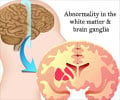Unlike cinematic seizures, subtle signs like laughing or lip-smacking are often overlooked which can aid in early diagnosis and treatment of epilepsy.

Orlando Health Epilepsy
Go to source).
Analyzing Signs & Symptoms of Seizures Perceived by Americans
If you’ve ever seen a movie or TV show in which a character has a seizure, you probably have a fairly standard mental picture of someone falling to the ground in full-body convulsions while foaming at the mouth. But that doesn’t necessarily reflect reality. Most Americans recognize those classic symptoms of what’s called a generalized tonic-clonic seizure, but the majority fail to recognize the subtle signs, all of which can be dangerous and have a profound impact on the lives of those suffering from them.‘Ignorance of mild seizure symptoms can lead to misdiagnosis, which can continue to negatively impact a person's quality of life and can even be fatal. #seizures #epilepsy #subtlesigns #seizuressigns #fits #medindia’





“Anything that interrupts your brain’s circuit can cause seizures, from tumors, infections, and strokes to high or low blood sugar or glucose levels to inherited genetic features. And different types of seizures can present with dozens of different symptoms,” said Dipali Nemade, MD, MPH, an epileptologist and neurologist at the Orlando Health Neuroscience Institute. “But because they often look different than those ‘cinematic seizures’ we see in movies and television, they can go undiagnosed for a long time.”The survey, conducted by Ipsos, found less than half of Americans believe numbness or tingling (32%), blinking rapidly (35%), crying out or screaming (13%), and laughing (6%) are signs of a seizure, but Dr. Nemade says it’s important to pay attention to any odd or out-of-place behaviors and address them with your doctor.
“Even seizures with these less dramatic symptoms can make everyday activities like driving and cooking dangerous. For some people, their seizures present outwardly with very subtle signs like smacking their lips, picking at their clothes or just staring into space, and it’s important to recognize when you or someone around you is experiencing them so they can be accurately diagnosed and treated,” Dr. Nemade said. “By looking at their brainwaves (EEG), we can see if those behaviors are being caused by seizures.”
For Mike Sail, seizures start with a flushed feeling that travels from his abdomen to his throat, followed by raised arm hair causing his condition to initially be misdiagnosed as acid reflux. It wasn’t until he lost his memory of an entire week that he was finally referred to Dr. Nemade, who diagnosed his condition as epilepsy.
Unrecognized Common Symptoms of Seizures
“I kept saying that it can’t be acid reflux because that doesn't cause the hair on your arms to stick up,” Sail said. “For the most part, these episodes were not very disruptive. They only lasted a minute or two and usually only happened once every few weeks. Sometimes I’d have them while I was doing things like playing golf, and afterward, I would just go about my business. So, I was shocked to find out they were seizures because it wasn’t what most people think a seizure looks like.”Like most cases, Sail’s epilepsy is well-controlled with anti-seizure medication, lifestyle changes, and adequate sleep, and he no longer fears that uneasy feeling he gets before having what he now knows are seizures. Dr. Nemade says education is needed to help others like Sail raise a red flag when they’re having unexplained symptoms on a regular basis.
Advertisement
For rare cases of epilepsy that are resistant to anti-seizure medication, there are some advanced treatments that Dr. Nemade and her team offer at the Orlando Health Neuroscience Institute’s epilepsy center, such as intracranial monitoring (sEEG/subdural) and mapping the brain to find the exact spot where seizures are originating and removing a small piece of tissue.
Advertisement
If you suspect someone is experiencing a seizure, sit them down in a safe place without any sharp or heavy objects in their surroundings and ensure they can breathe freely until symptoms subside. If a seizure lasts more than five minutes, call 911. Those who have never received an epilepsy diagnosis or another explanation for their seizure should follow up with their doctor or a neurologist.
Reference:
- Orlando Health Epilepsy - (https://www.orlandohealth.com/services-and-specialties/neuroscience-institute/centers-and-programs/neurology/epilepsy-center)
Source-Eurekalert















